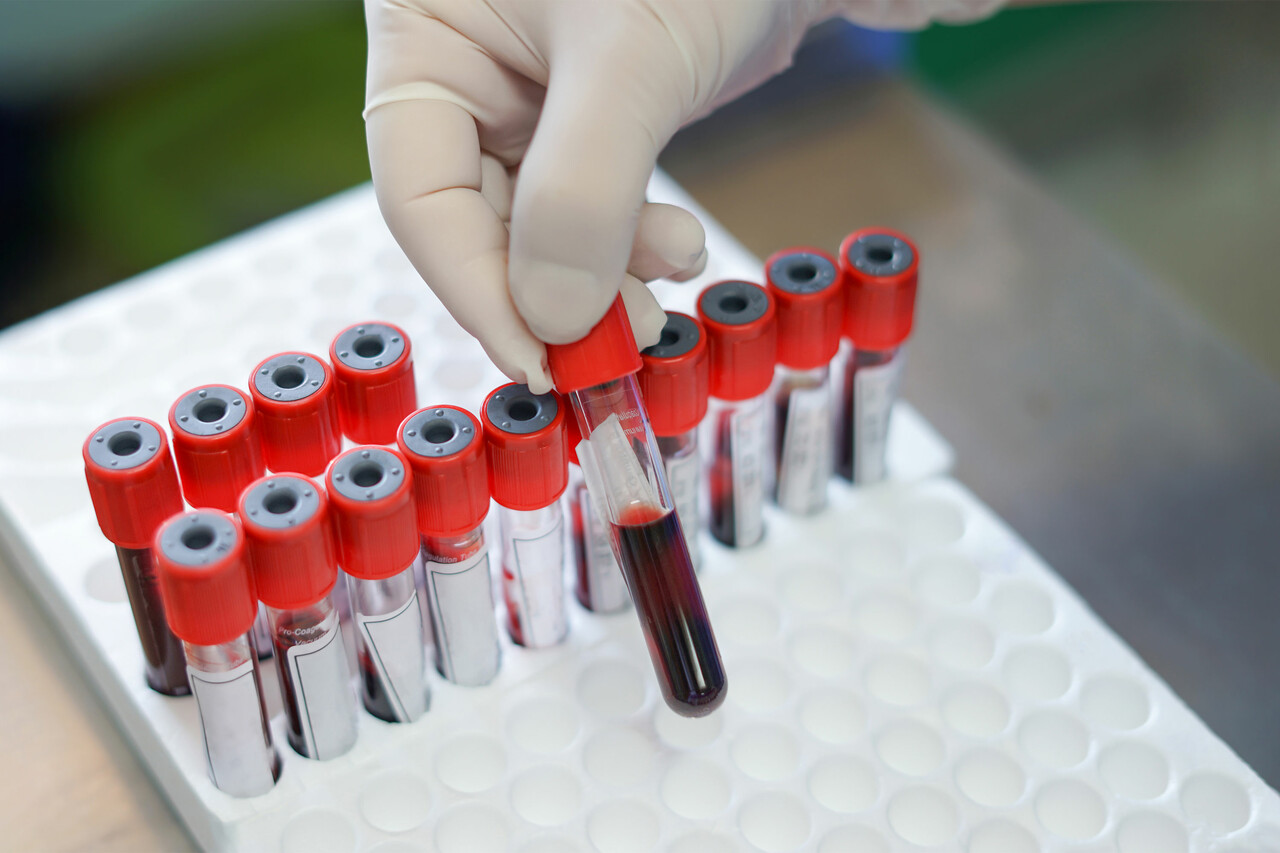
The diagnosis of a rheumatic disease, which involves a vast and complex array of conditions where the immune system mistakenly targets the body’s own tissues, rarely relies on a single, definitive symptom or physical finding. Instead, the process often culminates in a careful, sometimes frustrating, synthesis of the patient’s clinical presentation, the physician’s observations, and the results of a handful of specialized blood tests. These laboratory markers are not singular pronouncements of disease, but rather pieces of an elaborate biological puzzle, offering clues about the nature and intensity of the body’s internal inflammatory state and the specific antibodies it has begun to generate. Understanding the significance of these tests—their potential for false positives, their lack of specificity, and their tendency to fluctuate—is essential, not just for the clinician but for the patient navigating a complicated journey toward diagnosis and effective management. The interpretation is never binary; it is an exercise in nuanced clinical judgment.
Nonspecific Signals: The Acute Phase Reactants and Their Ambiguity
Many patients presenting with joint pain or systemic fatigue are first screened with two ubiquitous, yet highly non-specific, markers of inflammation: Erythrocyte Sedimentation Rate (ESR) and C-Reactive Protein (CRP). The ESR measures the rate at which red blood cells settle in a test tube, a speed influenced by the presence of acute phase proteins produced by the liver, while the CRP directly measures one of these proteins. Elevated levels of either—or both—confirm that systemic inflammation is present somewhere in the body.
…systemic inflammation is present somewhere in the body.
However, this is where their utility both begins and ends. High ESR and CRP can be caused by practically any inflammatory process: a common cold, a urinary tract infection, trauma, or a flare of gout. They are excellent markers for tracking disease activity—a rapid rise often signals a flare-up of an established rheumatic condition like Rheumatoid Arthritis or Lupus—but they offer almost no information regarding the cause of the inflammation. Consequently, a rheumatologist uses these values primarily as a baseline and a monitor rather than a diagnostic tool, understanding their sensitivity but recognizing their absolute lack of specificity.
The Autoantibody Labyrinth: Deciphering the Antinuclear Antibody (ANA) Test
For patients suspected of having Systemic Lupus Erythematosus (SLE) or certain other connective tissue diseases, the first step into the deep immunological woods is almost always the Antinuclear Antibody (ANA) test. This test detects autoantibodies that target structures within the nucleus of the body’s own cells. A positive ANA test is essentially a powerful signal that the immune system’s self-tolerance has been breached; it is generating antibodies against its own components.
…the immune system’s self-tolerance has been breached…
The interpretation of the ANA is famously fraught with difficulty. While a positive result is a near-universal finding in SLE, it is also frequently found in patients with other autoimmune disorders (like Sjögren’s syndrome or scleroderma) and, critically, in a significant percentage of perfectly healthy individuals, especially women, and the elderly. Furthermore, the titer (the concentration) and the pattern (the way the antibodies stain the cells) must be considered, providing subtle, non-definitive clues. Because of its low specificity, ANA is often used as a screening tool—a highly negative result makes a diagnosis of SLE unlikely, but a positive result merely opens the door to further, more specific testing.
Rheumatoid Arthritis Markers: The Quest for Specificity
When rheumatoid arthritis (RA) is suspected, the clinician turns to two more focused autoantibody tests, the Rheumatoid Factor (RF) and the Anti-Cyclic Citrullinated Peptide (Anti-CCP) antibody. RF, an antibody (usually IgM) that targets the Fc portion of the body’s own IgG antibodies, has been the traditional marker for RA for decades. Unfortunately, like the ANA, RF lacks perfect specificity, appearing in other conditions and in up to 5% of the general population.
Rheumatoid Factor (RF) and the Anti-Cyclic Citrullinated Peptide (Anti-CCP) antibody.
The more recent addition, Anti-CCP, is generally considered more specific to RA. These antibodies target proteins that have undergone citrullination, a modification process involved in the pathogenesis of RA. The presence of Anti-CCP, particularly when combined with a positive RF, significantly increases the diagnostic confidence for RA. Notably, Anti-CCP antibodies can often appear in the bloodstream years before the clinical onset of joint symptoms, suggesting they may be crucial in identifying individuals at high risk and allowing for earlier intervention before irreversible joint damage occurs.
Deepening the Lupus Inquiry: Specific ENA Panel Subsets
If a patient presents with a positive ANA, the rheumatologist will almost certainly order an Extractable Nuclear Antigen (ENA) panel to look for specific subsets of autoantibodies that are more tightly associated with particular diseases. The ENA panel screens for antibodies against a collection of antigens, each carrying its own diagnostic weight. For example, the presence of Anti-dsDNA (double-stranded DNA) and Anti-Sm (Smith) antibodies are highly characteristic of SLE and are often monitored to gauge disease activity, particularly in cases involving kidney involvement.
The presence of Anti-dsDNA (double-stranded DNA) and Anti-Sm (Smith) antibodies are highly characteristic of SLE…
The ENA panel also illuminates other connective tissue disorders: Anti-Ro/SSA and Anti-La/SSB are highly suggestive of Sjögren’s syndrome, though they are also seen in SLE. Similarly, Anti-Scl-70 points strongly toward systemic sclerosis (scleroderma), and Anti-Jo-1 is linked to certain inflammatory muscle diseases (myositis). These tests are pivotal because they allow the clinician to move past the non-specific ANA screen and pinpoint the underlying autoimmune syndrome, which is crucial for determining the appropriate treatment protocol.
Vascular Markers: ANCA and the Small Vessel Vasculitides
In cases where the clinical presentation involves inflammation of the small to medium blood vessels—a group of serious conditions known as the Systemic Vasculitides—the key diagnostic markers are the Anti-Neutrophil Cytoplasmic Antibodies (ANCA). These autoantibodies target components within the cytoplasm of neutrophils, a type of white blood cell. There are two primary patterns: c-ANCA (cytoplasmic) and p-ANCA (perinuclear).
…the key diagnostic markers are the Anti-Neutrophil Cytoplasmic Antibodies (ANCA).
A strong c-ANCA result, usually targeting the proteinase 3 (PR3) antigen, is highly associated with Granulomatosis with Polyangiitis (GPA), a severe, multi-organ vasculitis. Conversely, p-ANCA, often targeting myeloperoxidase (MPO), is linked to Microscopic Polyangiitis (MPA). The presence and specific type of ANCA are not only vital for initial diagnosis but also for monitoring the disease course and treatment response, as rising levels may precede a clinical relapse. These markers require careful correlation with organ involvement (lungs, kidneys, skin) to avoid misinterpretation, as low-level ANCA positivity can occur in various infectious conditions.
The Genetic Predisposition: HLA-B27 and the Spondyloarthropathies
Unlike autoantibody tests, which detect the effect of an immune dysfunction, the HLA-B27 test examines a patient’s specific genetic makeup. HLA-B27 is a surface protein encoded by a gene that is tightly, though imperfectly, linked to a family of rheumatic diseases called the Spondyloarthropathies. The most notable of these is Ankylosing Spondylitis (AS), a chronic inflammatory arthritis primarily affecting the spine and large joints.
HLA-B27 is a surface protein encoded by a gene that is tightly, though imperfectly, linked to a family of rheumatic diseases…
The test is frequently used in individuals with chronic back pain of inflammatory origin or those with peripheral arthritis associated with psoriasis or inflammatory bowel disease (IBD). While the vast majority of people with the HLA-B27 gene never develop AS (underscoring the fact that genetics are not destiny), its presence in a patient with compatible clinical symptoms significantly increases the diagnostic probability. A negative result, however, does not rule out the disease, as a small but significant percentage of AS patients lack the gene, confirming the diagnosis remains ultimately a clinical one.
The Complement Cascade: Tracking Immunological Consumption
The Complement System is a complex part of the immune response, a cascade of proteins that assist antibodies in clearing pathogens and damaged cells. In certain autoimmune diseases, particularly active SLE, the constant formation of immune complexes (antibodies bound to antigens) leads to the consumption of Complement factors C3 and C4. The measurement of these specific complement components in the blood is therefore highly informative.
The consumption of Complement factors C3 and C4.
Low levels of C3 and C4 in a lupus patient often indicate a period of active, aggressive disease, particularly when the kidneys are involved (lupus nephritis), making it a critical biomarker for monitoring treatment efficacy and disease activity. Conversely, normal or elevated levels suggest either that the disease is quiescent or that the immune attack is not heavily reliant on the complement cascade. This test provides a real-time, quantitative measure of the intensity of the immunological battle and guides crucial therapeutic decisions regarding immunosuppressive drug dosing.
Muscle and Liver Enzymes: The Overlap Syndromes
Rheumatology often intersects with other medical fields, particularly when considering the inflammatory myopathies (muscle inflammation). In these scenarios, the clinician looks beyond autoantibodies to specific blood markers that reflect muscle damage, such as Creatine Kinase (CK) and Aldolase. Elevated levels of these enzymes are a powerful indicator of ongoing inflammation and damage to skeletal muscle fibers, as seen in conditions like polymyositis and dermatomyositis.
…beyond autoantibodies to specific blood markers that reflect muscle damage, such as Creatine Kinase (CK) and Aldolase.
Similarly, the rheumatologist frequently orders liver function tests (LFTs), including AST and ALT. While elevations can indicate primary liver disease, they are often a crucial safety check for monitoring the toxicity of potent immunosuppressive drugs used to treat rheumatic diseases, such as methotrexate. Abrupt changes in these enzyme levels, therefore, may signal either drug-induced injury or, less commonly, an overlap syndrome involving the liver itself, necessitating immediate and careful therapeutic adjustment.
The Complete Blood Count (CBC): A Systemic Overview
Before diving into the complex world of autoantibodies, the humble Complete Blood Count (CBC) offers a fundamental, yet often overlooked, window into the systemic effects of rheumatic disease. The CBC provides a count and measurement of red blood cells (RBCs), white blood cells (WBCs), and platelets. Anemia (low RBCs) is extremely common in chronic inflammatory states, known as the anemia of chronic disease.
…anemia of chronic disease.
Abnormalities in the WBC count can also be highly significant: a consistently low white cell count (leukopenia) or lymphocyte count (lymphopenia) is often a hallmark of active SLE, while an extremely high WBC count could suggest infection or a primary hematologic disorder. Furthermore, monitoring the platelet count is essential, as some rheumatic conditions are associated with either platelet consumption (thrombocytopenia) or overproduction (thrombocytosis). The CBC is the essential starting point, providing a broad overview of the disease’s general impact on the hematopoietic system.
The Final Synthesis: Integrating Clinical and Lab Data
Ultimately, the constellation of blood tests used in rheumatology must never be interpreted in isolation. The entire process requires a careful synthesis of the laboratory data with the patient’s clinical presentation, including their symptoms, physical exam findings, and radiographic evidence. A positive test in a healthy person is insignificant, while a negative test in a patient with classic symptoms is a diagnostic challenge that necessitates re-evaluation and consideration of rarer diseases.
…synthesis of the laboratory data with the patient’s clinical presentation…
The markers are not labels; they are indicators of probability and activity. Rheumatology is defined by these subtle interactions, recognizing that a test’s meaning changes drastically depending on the context of the patient sitting across the desk. The successful diagnosis is the result of a process where the laboratory provides the biological evidence, but the clinician applies the expertise to build the coherent narrative of the disease.
